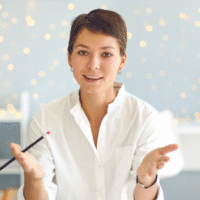Non Verbal Cues – What Are Film Posters Missing Out?
I was casually glancing through Bombay Times today morning and I noticed movie poster ads for the ongoing Bollywood movies. Being used to glancing at people’s expressions and non verbal cues, I realized just how much the movie posters are missing out on, if these aspects are not correctly depicted. This is especially so, since unlike running commercials where audio and visuals run in tandem with each other, in a poster the film maker has to communicate only to the visual senses of his audience.
WHY POSTERS CAN BE CRUCIAL IN ATTRACTING AUDIENCE
The true role of a movie poster is not only to attract audiences to the star cast of the movie but also to give a clue as to what the movie would be all about. Poster designs vary from line up of the star cast to a typical scene from the movie to a pose specially to attract the audience. If the star cast is going to be the main reason why the film maker expects his audience to visit the theatre, he makes sure all the actors are strongly projected in the poster. Similarly, if there is humour in the movie, it might be difficult to just cut a scene from the movie and suggest that the movie is on lighter tones. For this, the film maker might decide to go for a special pose in the poster. And if there is the possibility of hightlighting the drama through a scene straight out of the movie, that is what you will see on the poster.
WHEN POSTERS GO WRONG
Take a look at the below posters from currently ongoing movies and see if you can spot why these posters could have done with a little more body language homework on the part of the film maker
The actor, Abhay Deol, is doing a decent job on non verbals in the poster One By Two but the expression on the face of the actress, Preeti Desai, has not been handled well. She is probably posing for a surprise look on her face with the hand near the mouth and her mouth wide open. In a truly surprised face, the eyes are wide open, with lower eyelids relaxed, upper eyelids raised. The jaw drops, causing lips and teeth to part. The wider the jaw open, the bigger the surprise. Finally, eyebrows appear curved and high. (refer to Paul Ekman, Unmasking the Face). This would normally result in fine lines forming on the forehead of the person with the expression of surprise. Where are these on the actress? Did she forget to pose properly or were they deleted in post production to make her appear crease free? Also, there cannot be any other expression on the face at the same exact moment as when there is surprise. The reason for the surprise might then cause the person to react with different expressions, which could be fear, anger, happiness, etc depending on the reason for the surprise. So the happiness and the surprise on the actress’ face cannot be appearing together for the expression to look truly genuine. People unconsciously recognize genuine expressions and when these are missing or incomplete, they might fail to connect with the person in the poster. So if the intention of the poster was to draw humour, it might get a little difficult to catch on to it just by glancing at the poster briefly.
Similarly the poster of Hasee to Phasee intends to show the actor, Sidharth Maltora, good humoredly clenching the actress. He has clenched teeth and yet a smile on his face which suggest the same. The tensed nerves in the hands add on to confirm the clenching action. What about the actress, Parineeta Chopra? Is she merely smiling for the camera or is she acting threatened or fearful because the actor is clenching at her neck? It is difficult to realize the intention of the pose just by looking at it. Also the all-ok sign that her left hand is posing leaves me clueless at to its meaning in this particular poster. Once again, if the entire picture is not depicting one cohesive message with all possible non verbal cues, the audience might feel disconnect with the same.
MAKING POSTERS BETTER
There are a couple of things that the film maker should keep in mind when he okays the poster for release. The message to be depicted and the cohesiveness of the expressions and postures of the stars have to be handled properly during the shoot of the poster. Along with that, he needs to ensure that the changes made by the post production team do not hamper with the original intention the expressions are trying to create (refer to possibility of having deleted creases on the actress’ forehead in analysis of first poster).
READ ALSO
Friends or Foes? Madhuri Dixit and Juhi Chawla meet on Koffee with Karan
Amazing Mirroring Display by Nargis Fakhri and Frieda Pinto
Happy Marriages – The tale of Hrithik Roshan and Suzanne Khan
RELATED ARTICLES YOU MAY LIKE
HOW WE CAN HELP
Enhance your teaching impact with our tailored programs focused on improving non-verbal communication. Learn to build stronger connections with students, manage classrooms effectively, and boost student engagement. If you are looking to upgrade your body language skills, check out our online pre recorded courses on various topics that come with lifetime access. You can also explore our Signature Body Language Personal Coaching program Reach out to us on – 99309 41534.

























Contempt mixed with worry-lines (as Abhay has expressed it) is very easy to mimic consciously.
Nice artical